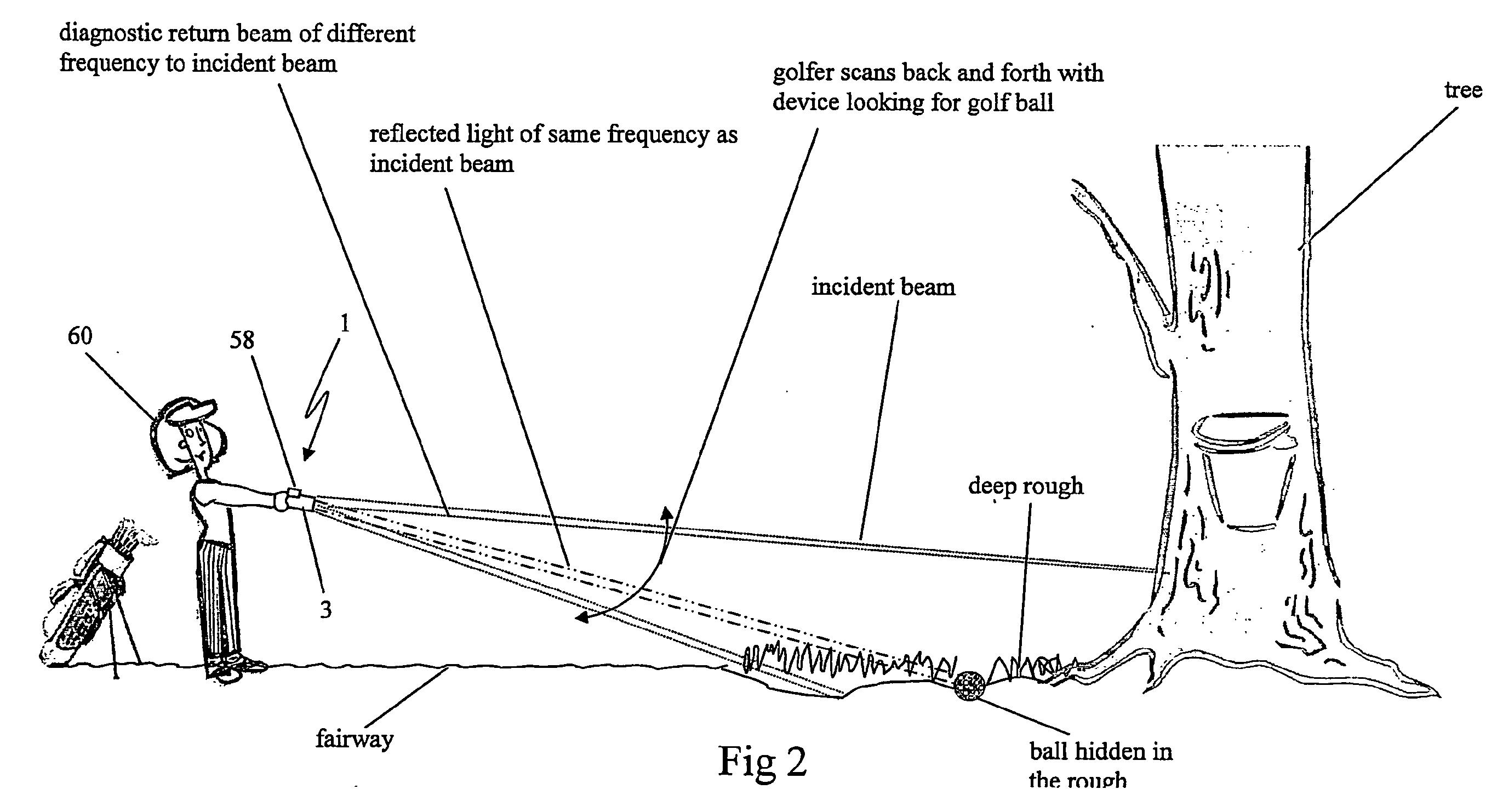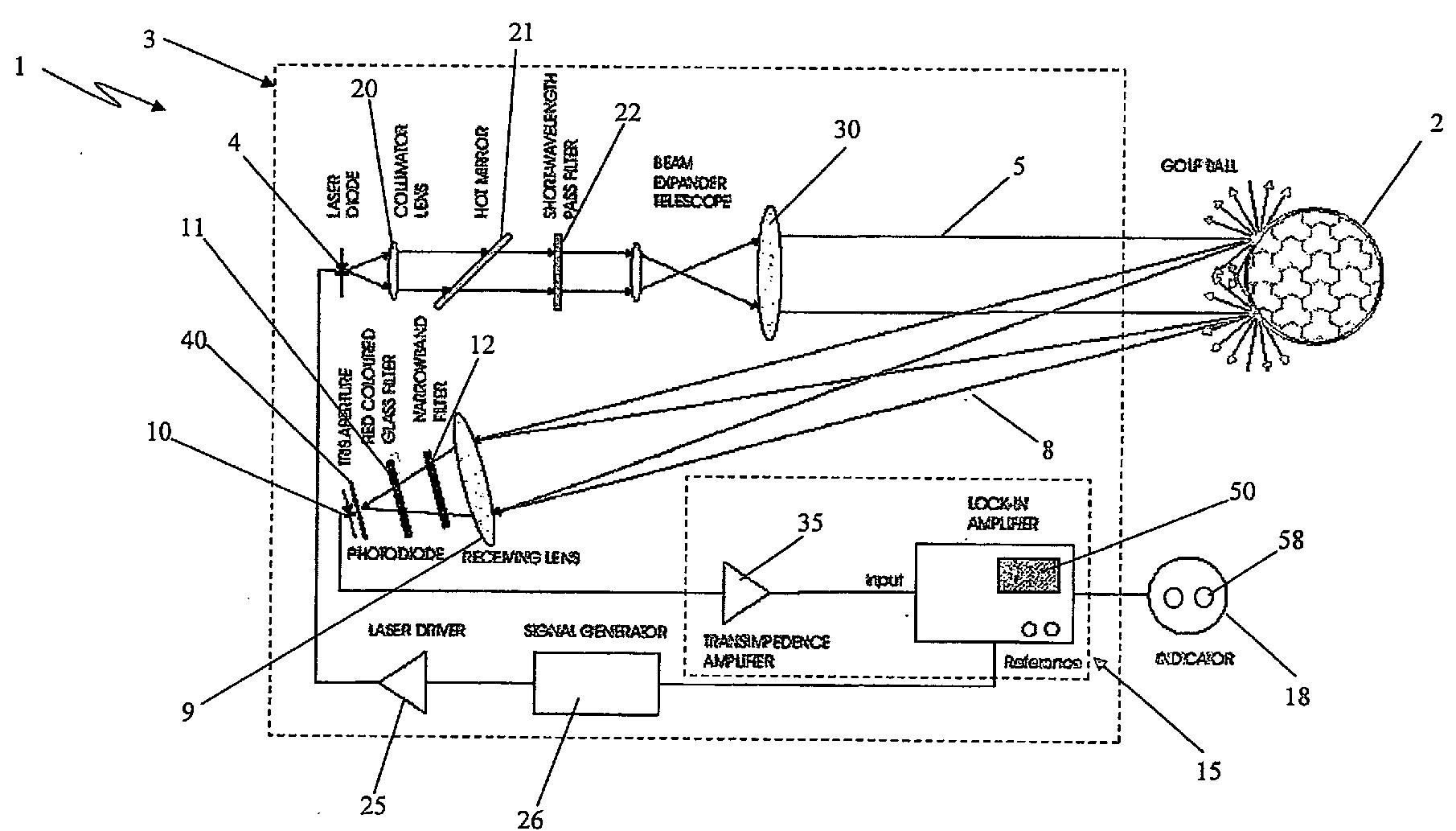Can it Be? A Practical Golf Ball Location System
I love reading patent applications directed to inventions designed to eliminate lost golf balls. Such inventions generally appear very impractical, expensive, or involve technology that would be difficult, or impossible, to incorporate into a golf ball; which is what I expected to find when reading a recently published patent application (namely, US Pub. No. 20080061236 titled “Device for Assisting in Finding an Article”). Upon reading the patent application I was blown away because I found myself saying “this doesn’t seem that impractical, in fact it might be a decent idea and I would consider buying one if it were under $50.”
The patent application describes the invention as:
[0107] When an excitation beam from the device strikes the coating, energy is absorbed and then retransmitted at a lower frequency and longer wave length as a return beam which can then be detected by the device.
Check out these drawings:


The patent application goes on to describe these further aspects of the invention:
[0131] A characteristic of a fluorescent material, eg a coating, is the so called Stokes shift which is a difference in energy or wavelength between the absorption and emission maxima. Thus the maxima positions are different. The maximum wavelength of the emission is greater than that of the absorption. Thus knowledge of the difference between the absorption maxima and the emission maxima is used in designing the system where the excitation beam generating means and also the receiver and means for detecting the return beam from the fluorescent coating. Based on the wavelength of the excitation beam, and the absorption in emission spectra properties of the fluorescent coating, a receiving and detecting means for the return beam can be designed that will hone in on the return beam and screen and filter out all other light and electromagnetic radiation. This is critical in designing a system with the appropriate level of detection ability.
[0132] Generally the fluorescent coating will be coated on to a standard golf ball. It is highly desirable that the coating be transparent so that it does not alter the look and feel of a conventional golf ball. The coating will be in the form of a polymer dye that can be applied to the ball for example by immersing the balls in the dye, painting the dye on to the ball or spraying the dye on to the ball. Applicant envisages that the dye may be cured by UV once it is applied to the balls. Further the dye should preferably not be bleached by normal solar radiation and thus should have a sufficiently short radiative half life.
Very interesting.
Dave Dawsey – Tracking Golf Ball Inventions and Patents
PS – click here and here to check out other golf ball tracking inventions
